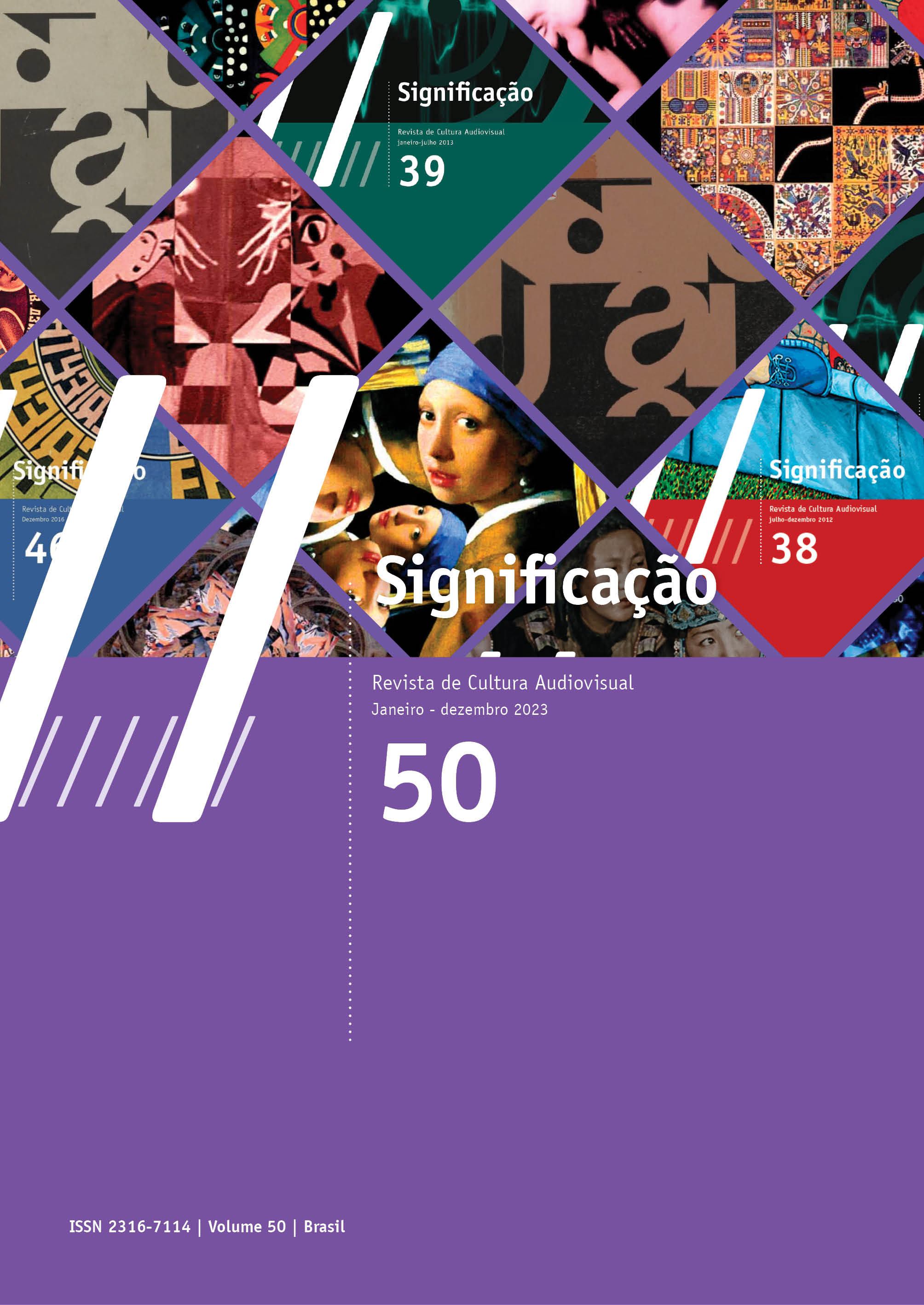Mythical realism in the western: Clint Eastwood’s Unforgiven
DOI:
https://doi.org/10.11606/issn.2316-7114.sig.2023.207203Keywords:
Realism, Myth, Literature, WesternAbstract
In this article, we coin the concept of “mythical realism” to examine Clint Eastwood’s film Unforgiven (1992) and we make a comparison between Homer’s Odyssey and the western. Supported by studies on mythology, we present the characteristics of mythic realism and analyze the reasons of the trip, the name and the revenge. We consider that the concept of “mythical realism” may raise new questions about the relationship between realism, myth, literature and the western.
Downloads
References
AGUILAR, C. Sergio Leone. Madrid: Cátedra, 2009.
AUERBACH, E. Mímesis: La representación de la realidad en la literatura occidental. México: Fondo de Cultura Económica, 1996.
BARTHES, R. Mitologías. México, DF: Siglo XXI, 1999.
BONTE, P.; IZARD, M. Diccionario de Etnología y Antropología. Madrid: Akal, 1996.
CAMPBELL, J. O herói de mil faces. São Paulo: Cultrix, 1997.
CARROLL, N. Interpreting the movie image. United Kingdom: Cambridge University Press, 1998.
GIUCCI, G. “Viaje”. En. SINGH, D. Z.; GIUCCI, G.; JIRÓN, P. (org.). Términos clave para los estudios de movilidad en América Latina. Buenos Aires: Biblos, 2018, p. 197-206.
GIUCCI, G. Viajantes do maravilhoso: O Novo Mundo. São Paulo: Companhia das Letras, 1992.
HOBSBAWM, E. Un tiempo de rupturas. Sociedad y cultura en el siglo XX. Barcelona: Crítica, 2012.
HOMERO. Obras completas. Barcelona: Montaner y Simón Editores, 1927.
PEÑA-ARDID, C. Literatura y cine: Una aproximación comparativa. Madrid: Cátedra, 1992.
PIGLIA, R. Crítica y ficción. Buenos Aires: Planeta, 2000.
RAMA, Á. Transculturación narrativa en América Latina. Buenos Aires: Ediciones El Andariego, 2007.
SCHICKEL, R. Clint Eastwood: A Biography. New York: Vintage, 1997.
THE BEST 1960s Western movies, ranked. Ranker, Los Angeles, 1 Feb. 2024. Disponível em: https://www.ranker.com/list/best-60s-western-movies/ranker-film. Acesso em: 15 fev. 2024.
TODOROV, T. Introducción a la literatura fantástica. México: Premia, 1981.
Referencias audiovisuales
A MAN called Horse (Un hombre llamado Caballo). Elliot Silverstein, Estados ,Unidos, 1970.
BLADE runner. Ridley Scott, Estados Unidos, 1982.
C’ERA una volta il West (Érase una vez en el Oeste). Sergio Leone, Estados Unidos-Italia, 1968.
DJANGO. Sergio Corbucci, España-Italia, 1966.
DJANGO & Django. Luca Rea, Italia, 2021.
DRIVING Miss Daysy (Paseando a Miss Daisy). Bruce Beresford, Estados Unidos, 1989.
EL REINO de este mundo. Alejo Carpentier, México, 1949.
HIGH noon (A la hora señalada). Fred Zinnemann, Estados Unidos, 1952.
HIGH plains drifter (La venganza del muerto). Clint Eastwood, Estados Unidos, 1973.
IL BUONO, il brutto, il cattivo (El bueno, el feo y el malo). Sergio Leone, Alemania-España-Italia, 1966.
IL MIO nome è Nessuno (Mi nombre es Nadie). Tonino Valerii, Alemania-Italia, 1973.
LADRI di biciclette (Ladrones de bicicletas). Vittorio de Sica, Italia, 1948.
LITTLE big man (Pequeño gran hombre). Arthur Penn, Estados Unidos, 1970.
MISSISSIPPI burning (Arde Mississippi). Alan Parker, Estados Unidos, 1988.
PER UN pugno di dollari (Por un puñado de dólares). Sergio Leone, Alemania Occidental-España-Italia, 1964.
PER QUALCHE dollaro in più (La muerte tenía un precio). Sergio Leone, Alemania Occidental-España-Italia, 1965.
PLAY Misty for me (Escalofrío en la noche). Clint Eastwood, Estados Unidos, 1971.
ROMA, citta aperta (Roma, ciudad abierta). Roberto Rosselini, Italia, 1945.
SHANE (Raíces profundas). George Stevens, Estados Unidos, 1953.
THE BRIDGES of Madison County (Los puentes de Madison). Clint Eastwood, Estados Unidos, 1995.
THE MAN who shot Liberty Balance (El hombre que mató a Liberty Valance). John Ford, Estados Unidos, 1962.
THE SEARCHERS (Más corazón que odio). John Ford, Estados Unidos, 1956.
THE WILD bunch (La pandilla salvaje). Sam Peckinpah, Estados Unidos, 1969.
UN DOLLARO bucatto (Un dólar agujereado). Giorgio Ferroni, Francia-Italia, 1965.
UNFORGIVEN (Los imperdonables). Clint Eastwood, Estados Unidos, 1992.
YOJIMBO. Akira Kurosawa, Japón, 1961.
Downloads
Published
Issue
Section
License
Copyright (c) 2023 Mauro BAPTISTA, Guillermo Giucci

This work is licensed under a Creative Commons Attribution-NonCommercial 4.0 International License.
Authors who publish in this journal must agree with the following terms:
- Authors keep their copyrights and grant the journal first time publication rights, having their articles simultaneously licensed under the Creative Commons Attribution License, which allows sharing texts with authorship recognition and first publication on this journal for non-commercial purposes.
- Authors are allowed to make additional contracts, for a non-exclusive distribution of the article’s version published on this journal (e.g.: publishing in institutional repositories of articles or as a book chapter), with authorship recognition and first publication on this journal.
















